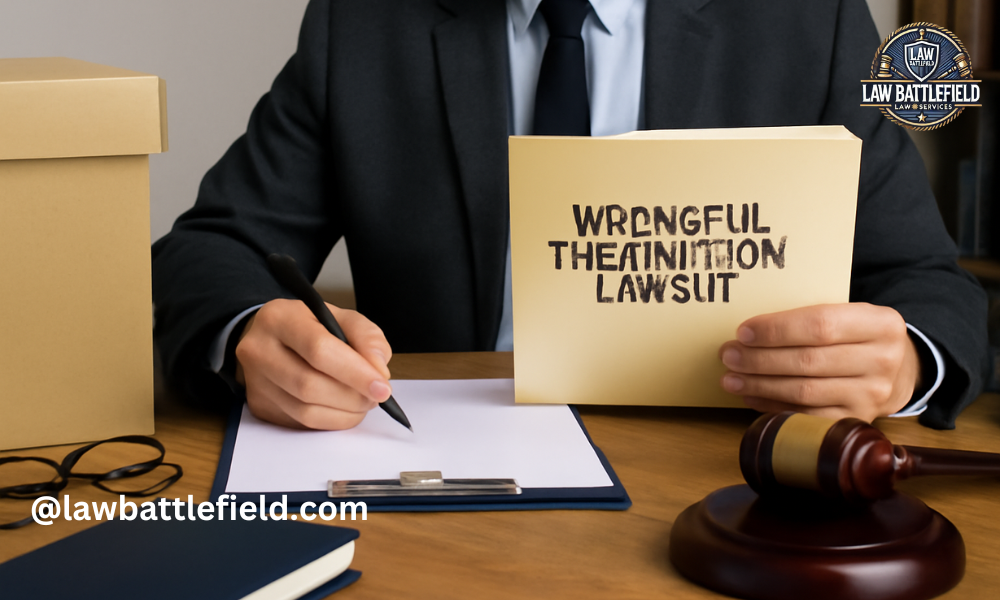The Trump CPB board removals lawsuit began when former President Donald Trump tried to remove members of the Corporation for Public Broadcasting (CPB) board. This move was unusual and led to a fast legal fight. CPB argued that the President did not have the power to remove its directors. Soon after, the case went to court and became a point of public debate.
This lawsuit matters because CPB is not just another government body. It helps fund and protect public broadcasting in the United States, including PBS and NPR. Many see it as a service that should remain free from political pressure. The removals raised questions about how much control a President can have over independent boards.
At the heart of the case are important issues. Can the White House decide who stays or leaves on the CPB board? Do bylaws and laws give directors protection from being removed? And what does this mean for the balance of power between politics and public service? These are the questions this article will explore step by step.
Background: What Is The CPB & Its Board Structure
The Corporation for Public Broadcasting, known as CPB, was created by Congress in 1967. Its main job is to support public media in the United States. That means funding and protecting networks like PBS and NPR so that people across the country can watch or listen to programs that are not driven by ads or political groups. CPB helps keep public media open, educational, and independent.
The CPB board is made up of directors who are appointed by the President and confirmed by the Senate. The law sets clear rules for how long each member can serve and how the board is balanced. Members come from different backgrounds and political sides, and no single party can take full control. This structure was designed to make sure CPB stays neutral and works for the public, not for any one political leader.
Over time, Congress has given CPB strong protections. The goal was to keep it safe from political swings and outside pressure. Presidents can nominate directors, but removal rules are not the same as in other agencies. Many experts say this independence is key to protecting free and fair public broadcasting. That is why the Trump CPB board removals lawsuit has drawn so much attention. It questions whether those long-standing safeguards can still hold in today’s political climate.
The Removal Attempts: What Trump Did & How
The fight over the CPB board started in April 2025. Three directors — Laura Ross, Diane Kaplan, and Thomas Rothman — each received an email from the Trump team telling them they had been removed from their seats. The board members did not step down. They argued that the President had no legal right to force them out. This clash set the stage for the lawsuit that followed.
A few weeks later, Trump signed Executive Order 14290. The order went further than the emails. It threatened CPB’s federal funding and claimed authority to remove directors directly. Public media groups and legal experts saw this as a serious step against the independence of CPB. The order made the conflict bigger, moving it from a boardroom fight into a national debate about executive power.
By July 2025, the U.S. government sued the three board members in court. The case asked the judge to enforce the removals and confirm that the President had the power to act. That filing turned the dispute into what is now known as the Trump CPB board removals lawsuit. It marked the first time this type of direct challenge had been made against CPB’s protections in its 50-year history.
The CPB’s Legal Claims In The Lawsuit
In court, the Corporation for Public Broadcasting argued that the President did not have the power to remove its directors. The Public Broadcasting Act created CPB as an independent body. Under that law, directors are meant to serve fixed terms and cannot be pushed out at will. CPB’s lawyers said that if the President could remove members at any time, the entire purpose of the law would be undermined.
The lawsuit also pointed to other legal protections. CPB claimed the removals violated the Administrative Procedure Act, which prevents government action that is arbitrary or outside legal authority. They argued the attempt was ultra vires, a legal term meaning “beyond one’s power.” CPB also warned that this was a kind of political test — removing directors only because they were not loyal to the President — which goes against the design of an independent board.
Because of these risks, CPB asked the court for preliminary relief. That means they wanted an immediate order stopping the removals while the case moved forward. This was a key part of the Trump CPB board removals lawsuit, since it aimed to keep the board stable until a final ruling could be made.
CPB’s Bylaws Amendment & Defensive Measures
After the removal notices went out, the CPB board made a defensive move. In May 2025, the directors voted to amend their bylaws. The new clause was simple but bold: no one, not even the President of the United States, could remove a board member unless two-thirds of the remaining directors agreed. It was meant as a wall against political interference, a way to remind the public that CPB was built to serve viewers and listeners, not politics.
The strength of that wall, though, was immediately tested. Under the D.C. Nonprofit Corporation Act, boards do have broad powers to shape their own rules. CPB leaned on that authority, arguing that its amendment was both lawful and necessary. Yet lawyers watching the case pointed out a major problem — federal law and executive power often weigh heavier than internal rules. Could a nonprofit bylaw really overrule a presidential order?
Timing also cast a shadow. Trump had already acted before the amendment passed. To supporters, the change was still a valid step to safeguard independence. To critics, it was nothing more than a late reaction, too weak to undo what was already done. Whether that rule can retroactively defend the directors remains one of the most uncertain questions inside the Trump CPB board removals lawsuit.
Broader Legal Principles: Removal Power, “For Cause” Doctrine & Precedents
The story of the Trump CPB board removals lawsuit cannot be understood without stepping back into legal history. Almost a century ago, in 1935, the Supreme Court ruled in Humphrey’s Executor v. United States that a President could not simply fire officials from certain independent agencies. That case involved the Federal Trade Commission, but its shadow still falls over today’s disputes. The Court said independence matters more than loyalty when it comes to boards designed to serve the public.
Fast forward to the present, and the ground has shifted. Advocates of the “unitary executive theory” believe the President should have sweeping control over all executive officers. To them, agency independence is not a strength but a weakness, because it limits accountability. This theory has gained influence in recent rulings, creating a clash between old protections and new ideas of presidential power.
The CPB lawsuit is not the only battlefield. Earlier in 2025, two FTC commissioners went to court after being dismissed by Trump. Their cases run parallel to CPB’s fight, and together they raise the same fundamental question: can independent directors really stay independent when the White House decides otherwise?
Now the eyes of the legal world are on the Supreme Court. A case known as Trump v. Slaughter is expected to test the limits of removal power again. If the Court sides with a stronger presidency, safeguards for boards like CPB may weaken. If it defends independence, the old precedent of Humphrey’s Executor will live on. Either way, the decision will echo far beyond public broadcasting. It will shape the balance between politics and independence for generations.
Conclusion:
The Trump CPB board removals lawsuit may sound like a narrow dispute, but its reach is far wider. At stake is more than a few seats on a board. The real issue is whether independent institutions can stand on their own when political power tries to break through.
This lawsuit asks big questions. Does a President have the final say over every corner of government? Or do agencies like CPB deserve protection so they can serve the public without fear of sudden political shifts? However the courts answer, the decision will leave a mark on public broadcasting, on separation of powers, and on the shape of American democracy.
For readers, this case is worth following closely. It will not only decide the future of PBS, NPR, and the CPB board — it may also set the rules for every independent body that claims freedom from political control. The outcome could redraw the lines of authority between Presidents and public service, making this one of the most important constitutional fights of the decade.
FAQs
What Is The Trump CPB Board Removals Lawsuit About?
It is a legal fight over whether former President Donald Trump had the authority to remove members of the Corporation for Public Broadcasting’s board.
Why Does This Lawsuit Matter For Public Broadcasting?
Because CPB funds PBS and NPR. A loss of independence could expose public media to direct political influence.
What Law Protects CPB Board Members From Removal?
The Public Broadcasting Act sets fixed terms for directors and was designed to keep them independent from political control.
Has Any Court Ruled On The Removals Yet?
Yes. Judge Randolph Moss denied CPB’s emergency request to block removals, but the larger case is still moving forward.
Could This Case Affect Other Agencies?
Yes. The ruling may set a precedent that influences the Federal Trade Commission, Federal Reserve, and other independent bodies.
Was this article helpful? Check out more on Lawbattlefield.com
Disclaimer: This article on the Trump CPB board removals lawsuit is for informational and educational purposes only. It is not legal advice and should not be treated as such. While efforts have been made to ensure accuracy, legal outcomes may change as new rulings or updates emerge. Readers should consult qualified legal professionals or trusted news sources for specific guidance related to this case or similar matters.
Cora Tampons Lawsuit: What You Need To Know About Rumors, Risks, And Reality





